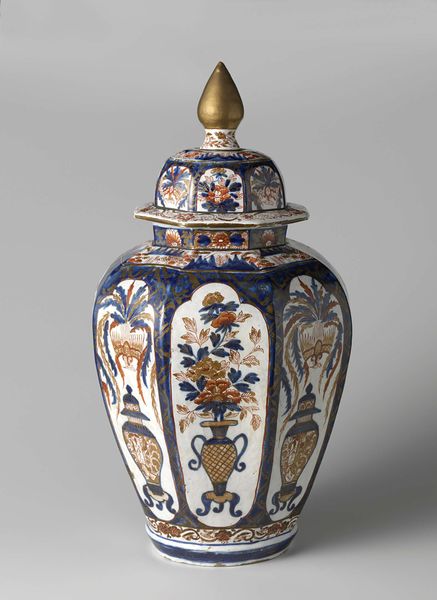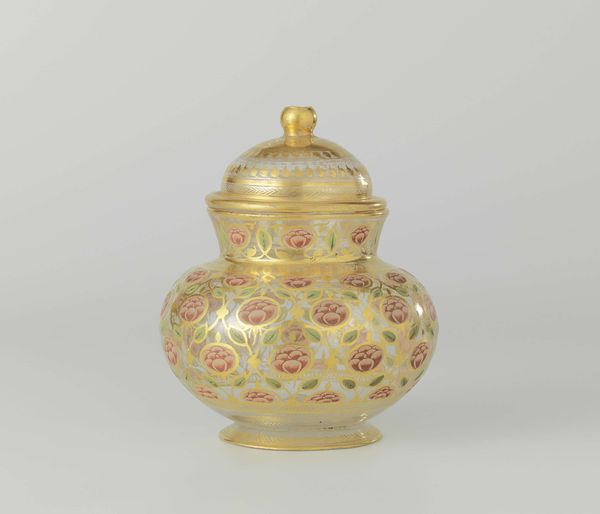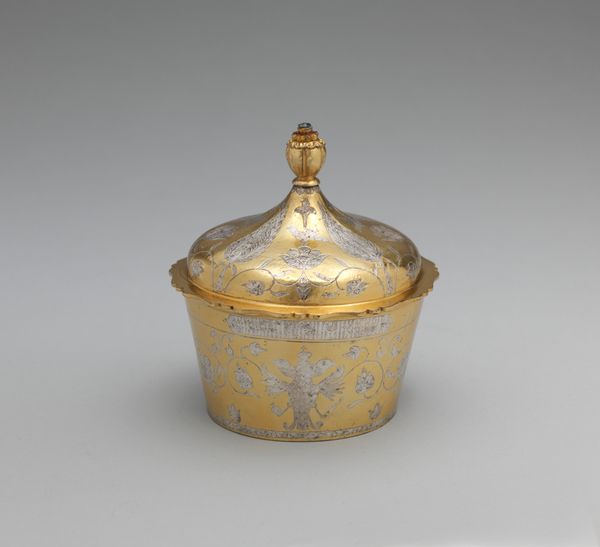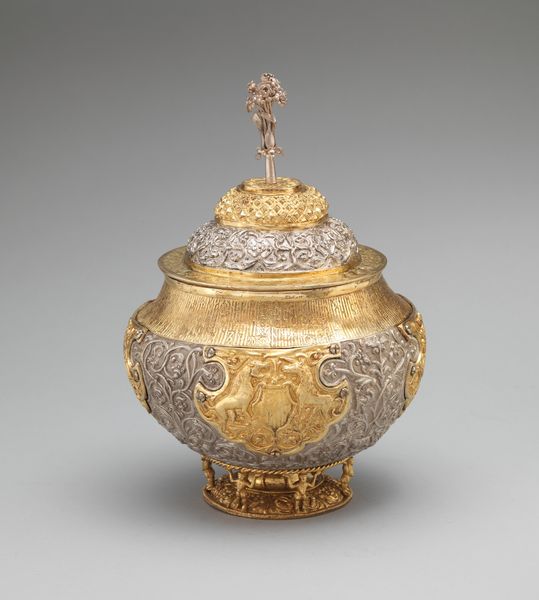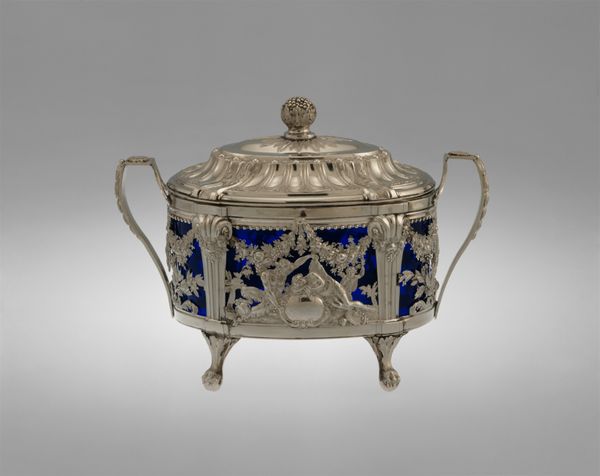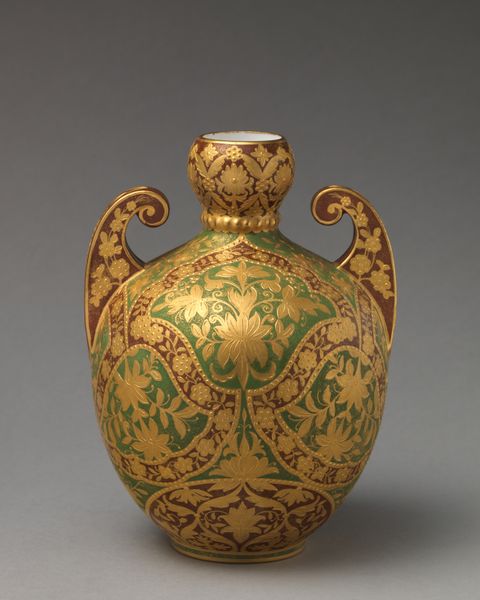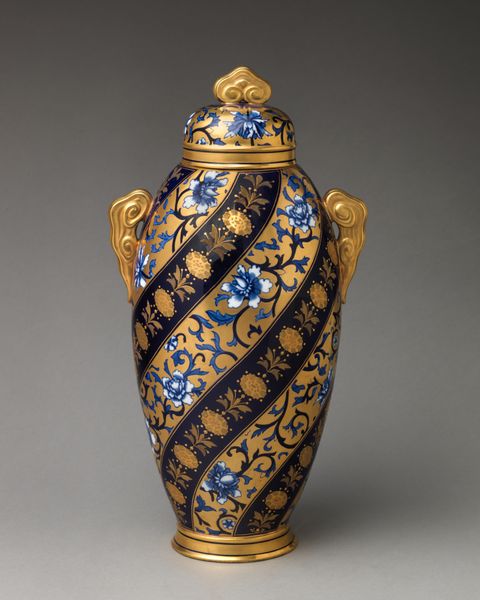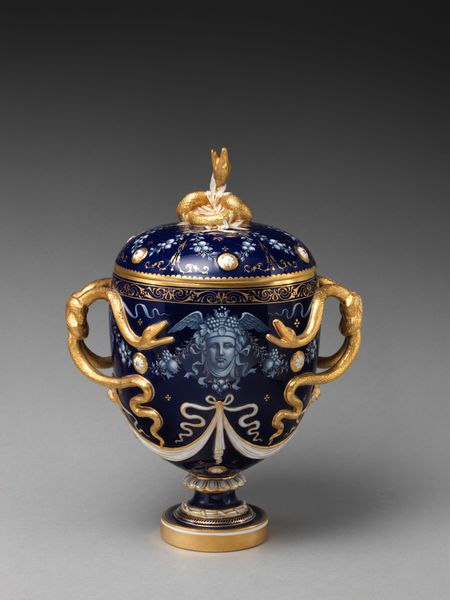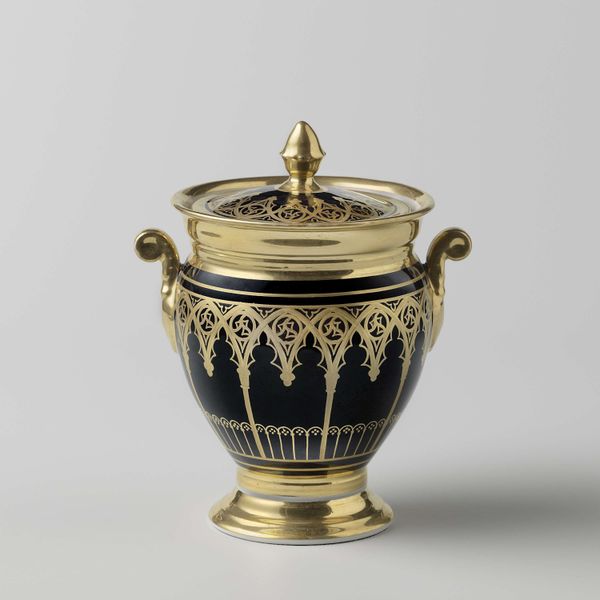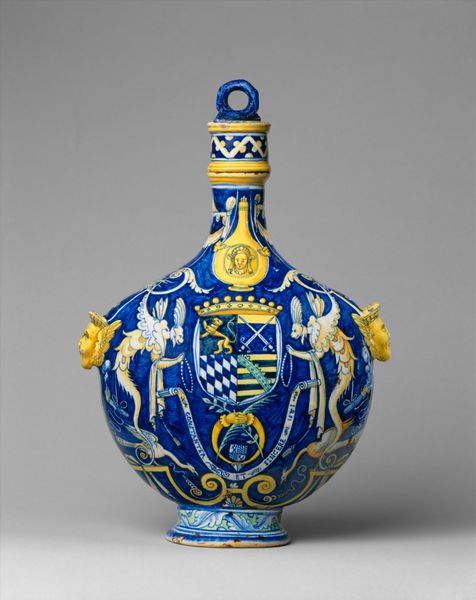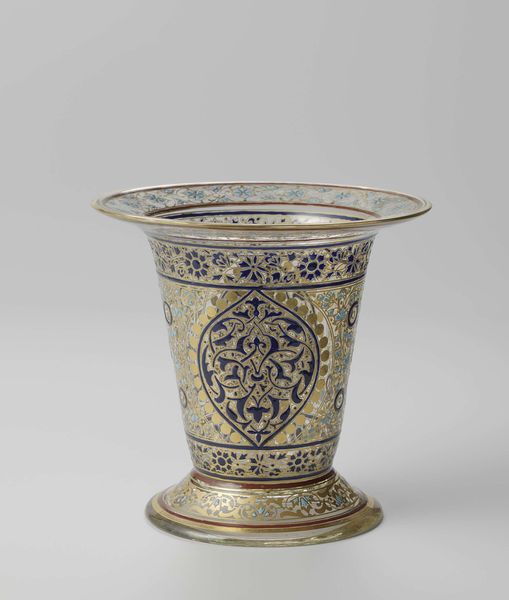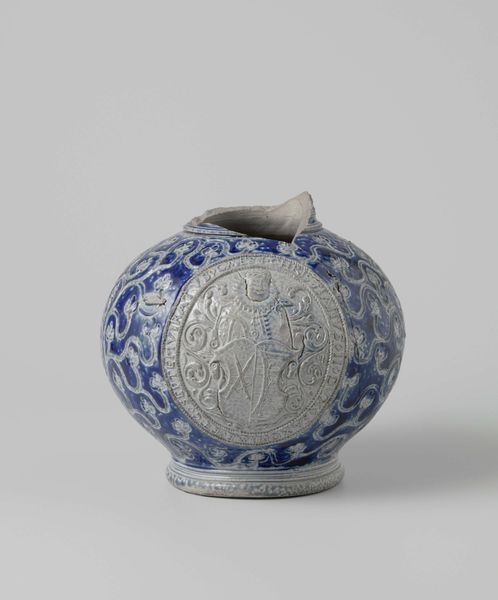
ceramic, porcelain
#
ceramic
#
porcelain
#
decorative-art
#
rococo
Dimensions: height 8.9 cm, diameter 7 cm
Copyright: Rijks Museum: Open Domain
Editor: This exquisite little piece, dating from around 1765 to 1770, is a porcelain sugar bowl crafted by Porzellanmanufaktur Frankenthal, currently held at the Rijksmuseum. The intricate vertical bands, the blues and golds... it’s just so delicate. What's the story behind something like this, historically? Curator: Well, its creation speaks volumes about the shifting social landscape of 18th-century Europe. Sugar itself was a luxury, an import associated with colonialism and, frankly, exploitation. This object isn't just a container; it's a status symbol. Consider the rococo style - all those ornate flourishes. Who do you think could afford such extravagance? Editor: Aristocrats, right? People with ties to the very systems that profited from sugar. Curator: Exactly! These objects, displayed prominently, reinforced social hierarchies. The beauty masks a complex and often brutal economic reality. Think about the materials themselves: porcelain manufacturing was intensely competitive; each European court vying to replicate the secrets held by China. Editor: So, owning something like this wasn't just about having money, it was about participating in this culture of prestige and global power? Curator: Precisely! The Rijksmuseum's display choices, for example, might reinforce or challenge that power structure. How they frame the object impacts our understanding of its history. Do they emphasize the artistic skill, or the social implications? Editor: It's fascinating how such a beautiful object can reveal such uncomfortable truths about the past. Curator: Indeed. It makes us think about how even everyday items can embody complicated social histories. Editor: It certainly changes how I see these decorative arts; not just pretty things, but artifacts loaded with meaning. Thanks!
Comments
No comments
Be the first to comment and join the conversation on the ultimate creative platform.
